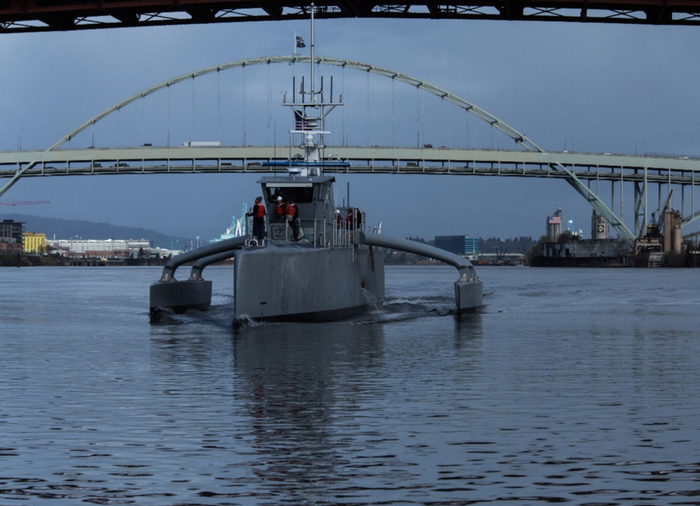US Navy purchasing sea drones Sea Hunter

ACTUV (Anti-Submarine Warfare Continuous Trail Unmanned Vessel) is a surface autonomous drone with high autonomy (may be in patrol mode for several months). The first device was ordered in 2012 year, and four years later began to pass tests. In February last year, the running tests of this drone, called the Sea Hunter, were completed, after which the sonar was tested and the possibility of long-term autonomous operation was tested. The main objective of the ACTUV program is to create an effective means of detecting diesel-electric submarines in coastal waters. The cost of the first unit was $ 23 million (the following will cost no more than $ 20 million per unit). The length of the Sea Hunter is 42 m, the total displacement is 145 t, of which 40 t is fuel. On the road tests, the robot accelerated to 27 nodes (50 km / h), despite the fact that its speed is affected by many factors (fuel remaining, wind direction and speed, wave height). The developers claim that ACTUV will be able to withstand the swell of the sea in 7 points (“strong waves” on the scale of the World Meteorological Organization).
The US Navy has already prepared a contract for the construction of the second copy of the Sea Hunter (the contract value is estimated at $ 25 million), and negotiations are underway to build a third Robot-submarine hunter
Sea Hunter is equipped with the latest sensors, radars and sonars that allow you to detect and classify underwater and surface objects in advance. Theoretically, the duration of one trip to the sea can be three months, after which the robot will require refueling and basic maintenance.
ACTUV robots will patrol in conjunction with anti-submarine aircraft P-8 Poseidon, drones MQ-4C Triton and special sonar buoys. In addition, the uninhabited trimarans will maintain constant communication with warships and other aircraft, "Warspot"
- http://www.usni.org/
Information